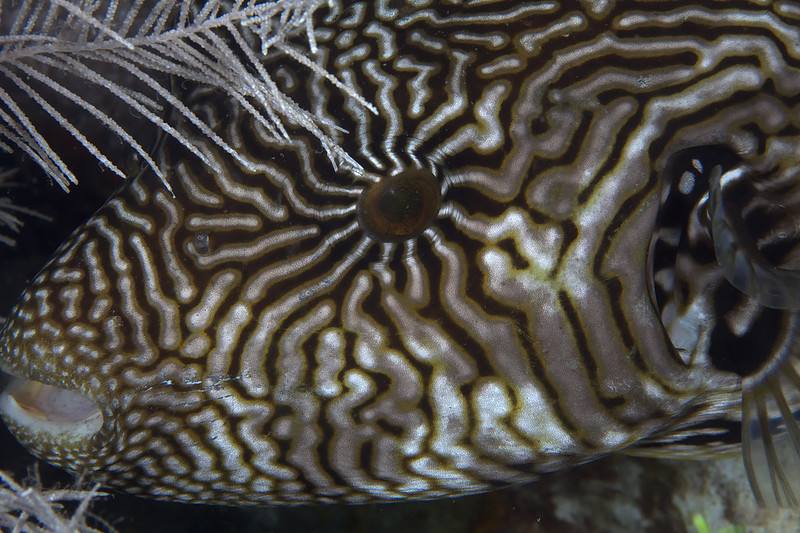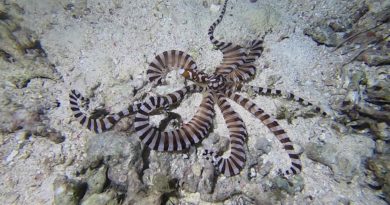Pacificklaus Dive Location Review: El Nido, Palawan
In the northwest of Palawan, between massive rock walls, lies the village of El Nido. It has become a bit of a trendy destination for the backpacker crowd in recent years. The scenery, vertical limestone-cliffs south of town, is absolutely fantastic; El Nido used to be a small fishing village a few years ago, and has probably grown a bit too fast. The small roads have a tad too many tricycles racing along them, and there is a bit too much filthy water in the crevices next to the roads. The place is not a serene quiet corner of the Philippines anymore, but it has still maintained a certain charm, simply because of the unreal landscape framing the town.
The visitors are mostly young budget travelers. Oddly then, El Nido is at least 30% more pricey than, for instance, Cebu or Negros. A massage (regular, non-happy ending type!) costs about 200-300 Pesos in Cebu, but 400 Peso in El Nido. That priceyness carries over to almost everything.
The young crowd also sets the pace for the nightlife. It doesn’t have the typical drinking-first dive bars of many other Philippine expat locations, but more trendy Reggae and dance-music places, some right on the beach. Also in sync with the backpacker crowd are the many smoothie and crepe stands. Some of the higher-end designer hostels (yes, that exists, for people who want to have a backpacker feeling but not miss the amenities of home) show movies on large outdoor screens. A nice place, generally.
El Nido is a jump-off point for a number of enjoyable activities around the north of Palawan; For day trips, island hopping is very popular, where you will visit the really pretty lagoons and beaches at the foot of those massive cliffs. The area is certainly photogenic. You can also visit the mangroves, rent a kayak, or go on a multi-day trip to the small islands north of El Nido. These are nice trips, but are oddly oversold as “expeditions, not tours”. Let me tell you: this is a really nice part of the world you will be boating through, and some really pretty beaches you will visit. But it’s by no means uncharted territory, and you won’t be the first white guy to step onto these islands. Everyone speaks English, and there is cell phone reception almost all the way through the Linapacan and Culion groups of islands. This ain’t Kansas anymore, but it ain’t the heart of the Amazon either!
And of course, there is diving in El Nido! Very surprisingly, El Nido is not a very well known diving destination. I have friends who have spent life-times diving the Philippines and have not dived El N. But that is not due to poor dive sites, rather due to the type of visitor I gets. A lot of the divers in El Nido tend to be relative beginners or open water students, and you see few seasoned divers or photographers with big ass cameras. The word about the nice diving here is simply not out yet.
Bacuit bay, where El Nido is located on the eastern edge, is a shallow bay with a number of steep, rocky islands scattered throughout. The dive sites are usually just below these unreal walls (the islands share their geology with the huge rock pillars in Thailand which were the location for the evildoer in James Bond’s “Dr. No”). Surprisingly, the walls don’t continue underwater. Rather, most reefs are sloping reefs, falling off at a 30 degree angle or so. The dive sites in El Nido are all not very deep. Recently, when teaching the deep dive of the PADI advanced open water course, I had to swim out quite a bit with my students to reach 30 meters. Most dive sites are less than 20 m deep, and the interesting stuff is often really shallow.
What is that interesting stuff? In brief, really healthy corals, good macro, and some schools and a little bit of big stuff.
The water temperatures in El Nido at depth fall to below 24C in the winter, and that is good for the corals. Coral bleaching, the damage to corals and their symbiotic algae due to high temperatures, is less of a threat in the region than in other places. For some reason, nudibranchs also seem to like slightly cooler temperatures, and there are many, and many different ones on El Nido’s reefs. The macro life in general is very rich, with orang utang crabs, emperor shrimp on sea cucumbers and diverse glass shrimp on anemones.
The small fish fauna of belnnies and gobies is rich, and interestingly quite different to the Visayas, especially on the blenny side of things. The dive site called “paradise” is a superb muck diving site, with hairy frogfish, helmut gunnards, and supposedly (I haven’t seen it) a mimic octopus at night!
As for the big stuff … I saw a massive marbled stingray, and a large loggerhead (I think) turtle, a dinosaur-like looking behemoth the size of a big person. The popular dive site “South Minilog” has a school of yellow snappers, and schools bonitos cruising through. Barracudas, both the great and the Heller’s type, are not rare in El Nido.
I have seen flasher wrasses flash their pretty fins in El Nido, and rockmover wrasses digging through the coral rubble. You can spot fangblennies biting larger fishes venturing too close to the evil little blenny’s home rock. You can observe turretfish blowing into the sand to expose prey animals. Triggerfish work on clams with their powerful teeth. Fish behavior fans will be happy underwater here.
There is nothing absolutely unique to diving in El Nido, like the thresher sharks of Malapascua or the wrecks of Coron, but the location offers lots of healthy, diverse reefs at relatively shallow depths, with weak to no currents – good conditions even for beginners. Certainly worth diving!
Whom to Dive with: Deep Blue is a great dive shop, which also offers live-on-board trips up north to Coron. They are also the first & only IDC training center in El Nido. Aquanaut offers Fluo-night dives. El Dive is a small, easy-going place with personal service, the owner Yoshi is a great guy. I can not recommend diving with the irritable-German owned dive shop which employed me for a short time.
How to get there: There are basically 3 options, to fly to Puerto Princessa/Palawan, then check out some cool stuff there, including the famous underground river, and then take a bus or van up north. That takes about 5 hours on not so great roads. Alternatively, AirSwift flies directly to El Nido, from Manila and Cebu City. The third option is to fly into Coron/Palawan, and then take an 8 hour ferry ride south. That sounds like a long ferry ride, but you will cross some sparsely inhabited, stunningly beautiful island groups on the way. It’s a day of relaxation with an amazing scenery.
Pacificklaus Dive Location Rating: 4.58/5 gobies.

